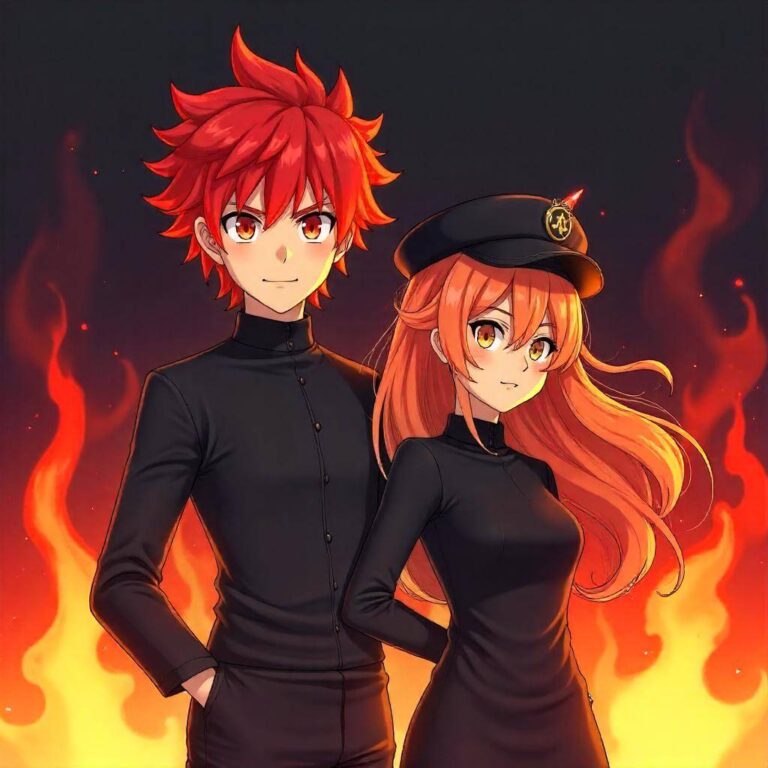Reader’s Question:
In Demon Slayer, is the Flame Hashira who helped Iguro Obanai Kyojuro Rengoku’s father, Shinjuro Rengoku?
Diving into the Flames: Who Was the Flame Hashira That Helped Iguro Obanai?
As a huge fan of Demon Slayer, I often find myself deep in thought about the complex characters and their intertwined
stories. The question of who helped Iguro Obanai when he was a kid—specifically, who that Flame Hashira was—really got my gears turning. So, let’s unravel this mystery together, shall we?
The Context: A Quick Recap
In the vast world of Demon Slayer, the roles of Hashira are crucial in the fight against demons. Each Hashira brings unique strengths and abilities, and their histories often overlap in surprising ways. The Flame Hashira, Kyojuro Rengoku, is a fan favorite, but we need to take a step back and consider the timeline to figure out who actually helped Obanai. Now, I know we all love Kyojuro, with that vibrant personality and killer combat skills, but the timeline just doesn’t add up if we were to pin the label of helper to him. If I remember correctly, Kyojuro is around 21 during the events of the series, and Iguro, at some point in his past, was just a kid during a traumatic event involving demons. The question arises—who was the Flame Hashira still active at that time?
Shinjuro Rengoku: The Father Figure
This is where Shinjuro Rengoku enters the scene. Shinjuro, Kyojuro’s father, was indeed the Flame Hashira during the time when Iguro was a child. It seems that this character has been somewhat overshadowed by the action-packed charisma of his son, but let’s not dismiss him just yet! Shinjuro was known for his unique appearance and the distinctive haori that symbolizes the Flame Hashira lineage. If you look closely at the scenes depicted in the manga and anime, there are elements that strongly suggest he’s the one who stepped in during Obanai’s time of need. The fact that Iguro was around 12 years old during this time makes it clear that Shinjuro was the one in the spotlight, actively fulfilling his duties as a Hashira.
The Battle of Generations
What’s fascinating about this whole situation is the way it illustrates the passage of time and the legacy left by the Hashira. Shinjuro, while not the most prominent character, carries a weight of generational struggle and the burden of expectations that we can all relate to in some way. It’s like when you think about your own parents and the sacrifices they made. You start to see that they’re not just parents—they’re individuals with their own battles and stories. Take my own experience, for example. I remember going back to my hometown after a long time away for college. Seeing my parents and reflecting on their struggles made me appreciate them in a new light. It’s like how we can draw parallels to Shinjuro and Kyojuro’s relationship. As we know, Shinjuro faced his demons (pun intended) and struggled with his own failures, which ultimately shaped Kyojuro. This adds a layer of depth to their relationship that resonates with many of us. It’s all about understanding how the past impacts the present.
The Impact of Shinjuro’s Guidance
Imagine being a young Iguro, feeling lost and unsure after a traumatic experience. And then, here comes Shinjuro Rengoku, a figure of strength and resilience, extending a helping hand. There’s something incredibly comforting about that idea. It reminds us that even in our darkest moments, there are figures who can guide us, even if it feels like a distant flame. When I think about the support I’ve received from mentors and friends during tough times, it hits home. It’s what we do for each other that helps us rise above the struggles. It’s heartwarming to think that Shinjuro played that role for Iguro.
The Legacy of the Flame Hashira
As the story unfolds, we see how Shinjuro’s actions reverberate through the lives of other characters. His influence is felt even after his time, showing how the efforts of one person can change the course of several lives. It’s a powerful reminder that we are all part of a larger narrative, even if we don’t realize it while we’re living it. In conclusion, when we think about who helped Iguro Obanai, it becomes increasingly clear that it was indeed Shinjuro Rengoku, Kyojuro’s father. The details we sometimes overlook contribute to the intricate tapestry of Demon Slayer. As the series continues to unfold, I can’t help but wonder: What other relationships and histories lie beneath the surface, waiting to be uncovered? If you have any personal thoughts or experiences relating to this theme, I would love to hear them! This is what makes Demon Slayer not just a story about fighting demons, but a poignant exploration of human connections, legacies, and the flames that guide us through the darkness.



